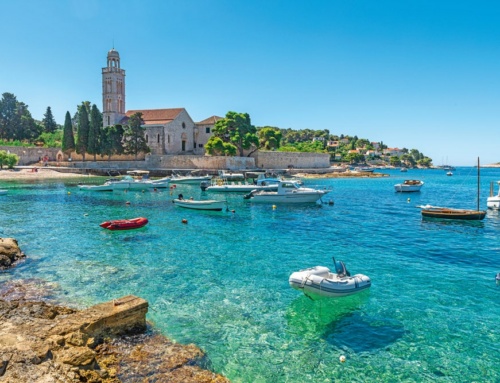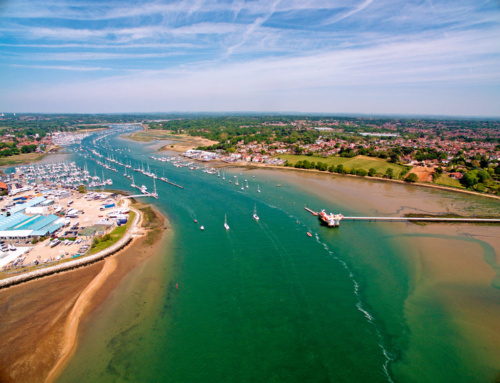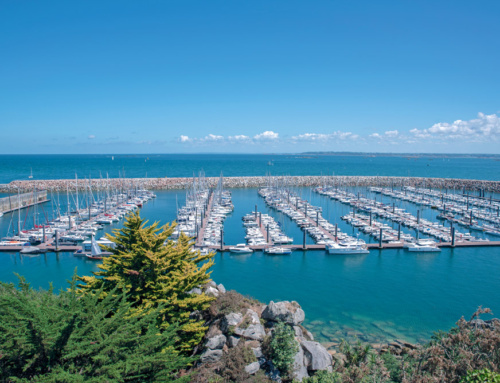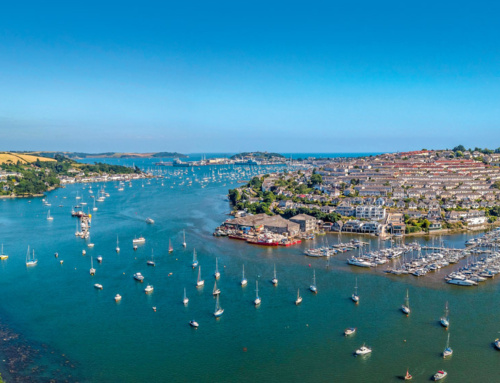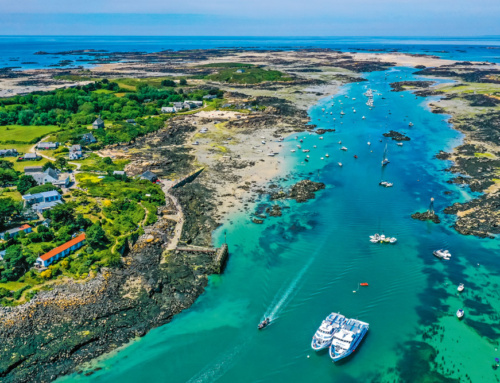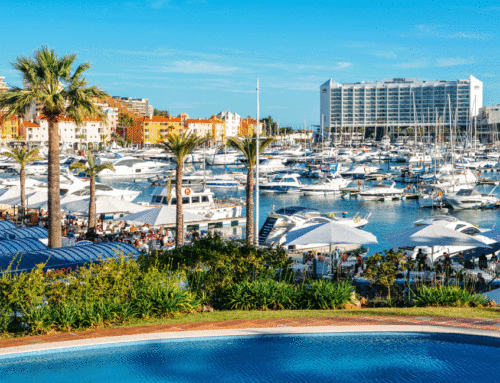- The UK has an amazing array of marine wildlife. As a recreational boater, give it the respect it deserves.
- The more educated people are about what to do and how to operate power-driven craft near wildlife, the more it is protected and will continue to thrive …
- As much as you want to see wildlife, you don’t want to put you, your passengers or boat at risk, and it doesn’t take much for that to happen in Jersey.
Wildlife Wonderland
Jersey is a marine wildlife marvel. But getting up close and personal with the island’s wide array of sea life and birds needs to be done correctly for both their well-being and yours. The RYA’s Emma Slater reports …
Dolphins. They never stop being captivating. It doesn’t matter how many times the mesmerising mammals join you, leaping gleefully on your bow, they’re guaranteed to get everybody aboard buzzing.
Now imagine seeing 40 to 50 of them in one place. Joe Mourant, RYA advanced powerboat instructor at Jersey-based Le Mourier, an RYA powerboat training school and RIB charter firm (www.lemourier.co.uk), has experienced just that. To him it sums up the magic of his marine playground.
‘Dolphins are the most popular thing for people to see,’ Joe admits. ‘Our bottlenose pod is one of the largest in the world, and there are common dolphins too that we can locate fairly reliably. To see a pod of 20 is more common than to see one or two. But even I was stunned to see so many in the same place on that day.’
Respectfully and responsibly observing marine animals and birds in their natural habitats is the purest way to enjoy them, and Jersey is spoilt on this front. As well as the year-round presence of dolphins, grey seals are equally prevalent, while cormorants, gannets and terns swoop and dive for fish before gathering to rest on the island’s rocky outcrops and cliffs. Jersey also has a small, localised puffin colony in the north, while out to sea, large black-backed gulls make an imposing sight.
It’s not uncommon to find the occasional rarer visitor to Jersey’s shores too, with Joe himself spotting a porbeagle shark and a peregrine falcon several miles out to sea, plus his own favourite sighting of two huge sunfish in Rozel Bay.
‘People occasionally mistake sunfish for sharks as they have a triangular fin that can break the surface,’ he reveals.
There was even a recent humpback whale sighting off La Corbière on the west coast.
Last September, two of Jersey’s most significant offshore reefs, Les Écréhous and Les Minquiers – an area totalling 62km2 and four times larger than Jersey itself – were protected from dredging and trawling by mobile fishing gear. Internationally recognised for their importance to wildlife, the reefs are home to extensive areas of seagrass, maerl and kelp, which are important nursery grounds for fish and shellfish and crucial in maintaining Jersey’s complex and fragile ecosystem.
Joe believes wildlife spotting drives a lot of boat ownership in Jersey. Yet it’s one thing knowing where to enjoy the wildlife, it’s another knowing how.
Imagine you’re in someone else’s home. If a gaggle of people peered through your windows with cameras and binoculars, you would find it a bit disturbing. Wildlife is no different. Disturbance is any activity or noise that could change an animal’s behaviour, such as feeding, resting or breeding, and thereby risk its well-being and even survival.
As a rule of thumb, The Green Blue, a joint initiative between British Marine and the RYA, recommends staying at least 100m away from marine wildlife in the water and 50m away from any wildlife on cliffs and rocks. Sometimes it’s difficult to judge distance – grey seals, for example, are very well camouflaged on rocks, and often wildlife moves towards you or appears alongside your boat! All you can do is use common sense and err on the side of caution.
Joe admits he has seen people get too close to seals on rocks, not knowing that scaring them into the water disrupts the rest they need to recharge their batteries to hunt. It’s similar with cormorants, whose feathers aren’t as waterproof by design as other seabirds so they can swim longer and dive deeper. But this also means their feathers get waterlogged, which is why they spread them out to dry on rocks.
He’s also witnessed the horrifying sight of a boat driving across a pod of dolphins, which not only interferes with the animals’ behaviour but risks injury from collisions and propellers.
The Green Blue advises that if you spot something over 100m away, you should stay on course at a steady speed, but be prepared to slow down to let it move out of your path. If you see something less than 100m away, stay on course but slow down and be prepared to stop altogether to avoid the risk of collision. With wildlife on cliffs, keep the recommended distance away and consider slowing to reduce noise.
Fifteen minutes’ quiet observation should be plenty to appreciate what you’ve seen, so don’t outstay your welcome. If you notice any signs of distress, leave immediately.
Things to avoid
The Green Blue guide to what can cause disturbance includes the following:
- Noise from powered craft
- Flash photography
- Abrupt movement (sudden stopping or acceleration)
- Dragging hulls across shoreline habitats when launching and landing
- Excessive speed and wake
- Approaching head on or chasing
- Getting too close/crowding
- Circling
- Separating (especially mothers from young)
- Jumping in the water to get a closer look/swimming alongside
- Feeding
- Touching
You can find out more about The Green Blue at www.thegreenblue.org.uk.
Jersey jeopardies
Joe also gave us a local’s eye view of cruising Jersey’s famous reefs, including the unique geography, geology and history. However, he also highlighted the perils of navigating in these waters, with Jersey having one of the world’s largest tidal ranges, very strong currents and submerged rocks, while the reefs pose pilotage challenges to test even experienced skippers.
As much as you want to see wildlife, you don’t want to put you, your passengers or boat at risk, and it doesn’t take much for that to happen in Jersey. With a 12m tidal range, in one hour of watching wildlife you could lose 3 to 4 metres in depth. There is also a 6-knot tidal run in the reefs, which, when combined with a rapidly dropping tide, means things can look vastly different very quickly.
As Joe concludes, by taking some RYA training, skippers can hugely increase their ability and knowledge, meaning that both they and their families can become confident and relaxed at sea and enjoy their time afloat more. They can safely navigate more of Jersey’s waters, plus those of the neighbouring Channel Islands and France, while also giving the local marine wildlife the respect it deserves.
He adds: ‘People often get a boat before they have had much or any training. But the incredible cruising opportunities Jersey offers really only open up once someone has developed the skill and knowledge to become a safe and confident skipper. Enjoying wildlife from your own boat in the company of family and friends is enormously satisfying. The more educated people are about what to do and how to operate power-driven craft near wildlife, the more it is protected and will continue to thrive, ensuring both this and future generations can enjoy and cherish it.’
The UK has an amazing array of marine wildlife. As a recreational boater, give it the respect it deserves. If you already hold RYA Powerboat Level 2, RYA Intermediate Powerboat introduces navigating on coastal passages by day while Day Skipper and Coastal Skipper/Yachtmaster Offshore theory addresses navigation theory. For more information visit www.rya.org.uk.

